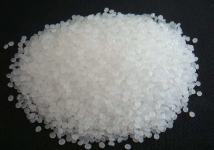read: 338 time:2025-04-01 09:16:47 from:化易天下
Understanding the pH of phenol is essential for anyone working in chemical industries, laboratories, or even students studying chemistry. Phenol, a crucial aromatic compound, is widely used in the production of plastics, pharmaceuticals, and other chemical intermediates. But when it comes to understanding its properties, one of the frequently asked questions is: What is the pH of phenol? In this article, we will explore this question in detail, analyzing the factors that influence the pH of phenol and its significance in various applications.
Phenol, chemically represented as C₆H₅OH, is an aromatic compound where a hydroxyl group (-OH) is directly attached to a benzene ring. This structure gives phenol its characteristic properties, including slight acidity. The acidic nature of phenol is primarily due to the electron-withdrawing effect of the benzene ring, which stabilizes the negative charge on the oxygen after losing a proton (H⁺).
The acidity of phenol is a key point when answering the question, "What is the pH of phenol?" Unlike strong acids like hydrochloric acid (HCl), phenol is a weak acid. Its acidity arises because the phenoxide ion (C₆H₅O⁻) formed after phenol loses a proton is stabilized by resonance within the aromatic ring. However, the electron-withdrawing nature of the benzene ring only slightly enhances the acidity, resulting in a weakly acidic behavior.
To directly address the question, What is the pH of phenol? the pH of a phenol solution typically falls in the range of 5 to 6 when in a dilute aqueous solution. This mildly acidic pH is a direct result of phenol's weak acidity, where only a small fraction of phenol molecules donate protons to the water, leading to a low concentration of hydrogen ions (H⁺) in solution.
Several factors can influence the exact pH of a phenol solution:
Concentration of Phenol: Higher concentrations of phenol can slightly increase the acidity, leading to a lower pH. However, due to its weak acidic nature, the pH will not drop significantly.
Presence of Other Substances: The pH of phenol can be altered if it is dissolved in a solvent other than water or if there are other substances present that can react with phenol or its ions. For example, basic substances can neutralize phenol, increasing the pH of the solution.
Temperature: As with most chemical substances, the pH of a phenol solution can be temperature-dependent. Higher temperatures generally increase the ionization of phenol, thus slightly lowering the pH.
Understanding the pH of phenol is not just an academic exercise; it has real-world implications in various industries. For instance, in the manufacturing of resins and plastics, controlling the pH of phenol is crucial for the consistency and quality of the end product. Additionally, in pharmaceuticals, the pH of phenol can influence its reactivity and interaction with other ingredients.
Given phenol’s weakly acidic nature, it is still important to handle it with care. While its pH indicates that it is not as corrosive as stronger acids, phenol is toxic and can cause severe burns upon contact with skin. Proper safety protocols, including the use of gloves and goggles, should be in place when working with phenol.
In summary, what is the pH of phenol? The pH typically ranges from 5 to 6, reflecting its weakly acidic nature. This property is essential for various applications, from industrial manufacturing to laboratory research. Understanding the factors that affect the pH of phenol, including concentration, presence of other substances, and temperature, allows for better control and utilization of this compound in different chemical processes.

Jincheng Petrochemical's 300000 ton polypropylene plant successfully trial production, 2024 polypropylene market analysis

The ABS market remains sluggish, what is the future direction?

Market differentiation of bisphenol A intensifies: prices rise in East China, while prices generally decline in other regions

The production method and process flow of silicone acrylic lotion, and what are the common raw materials